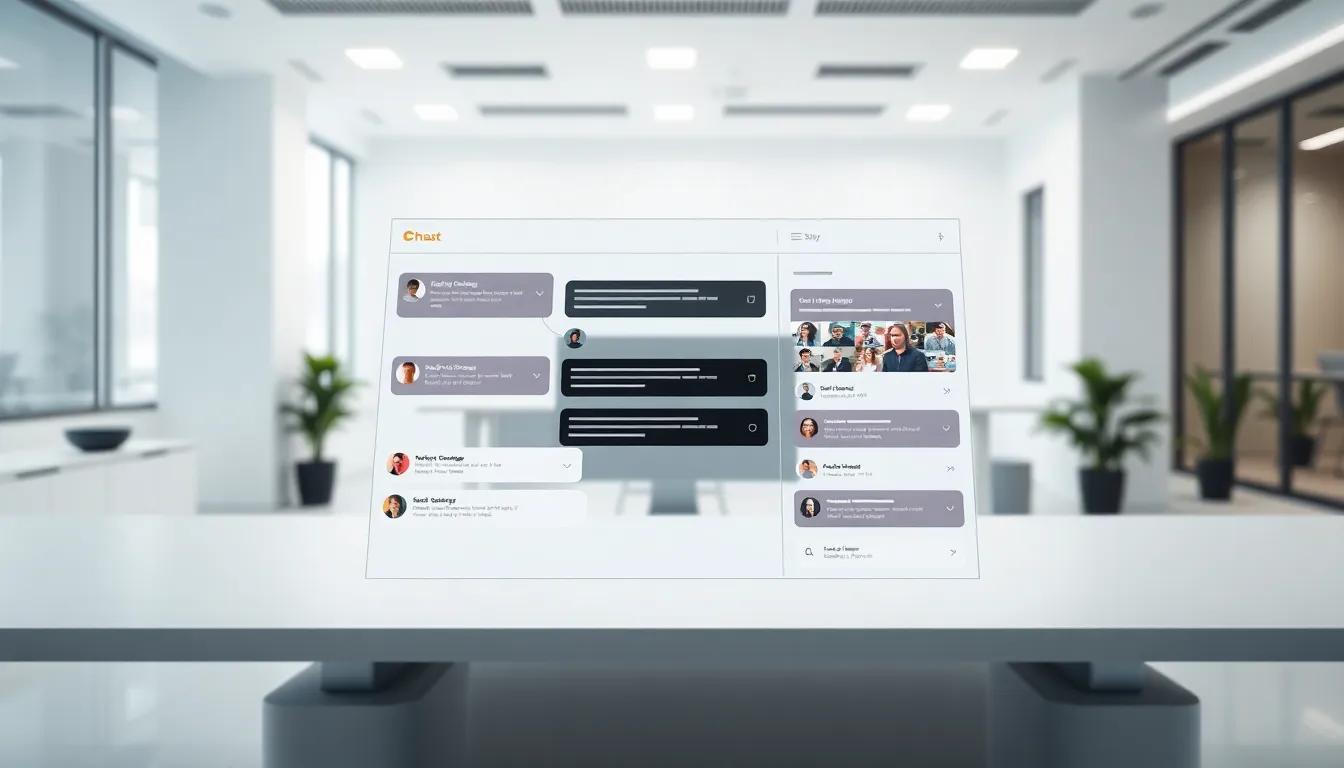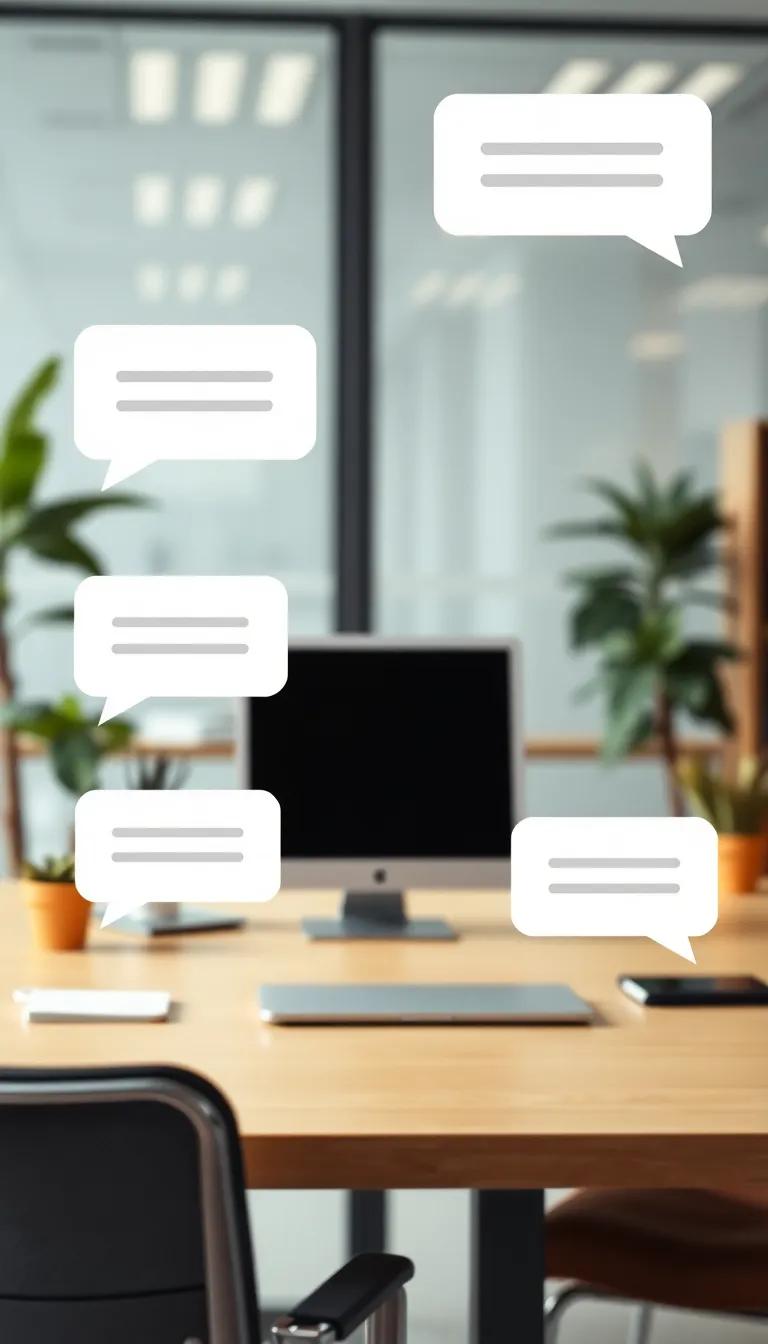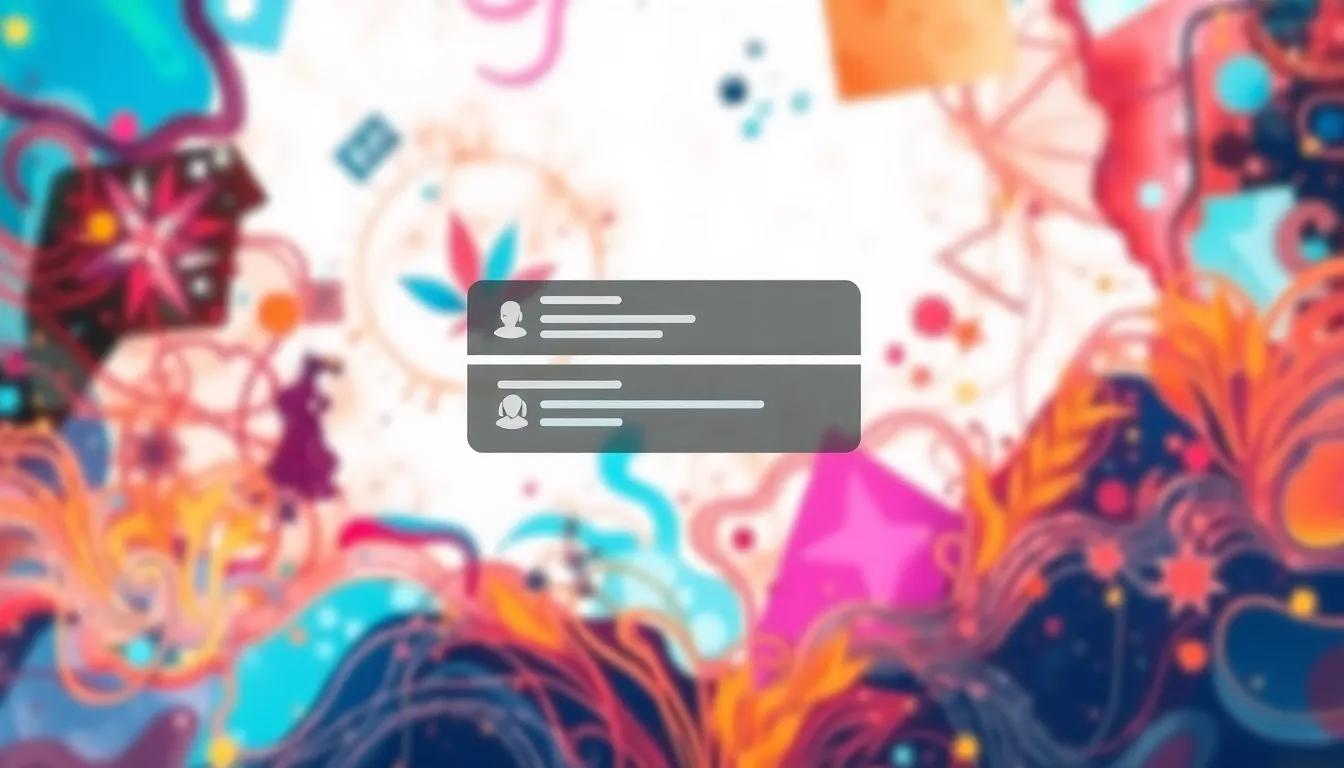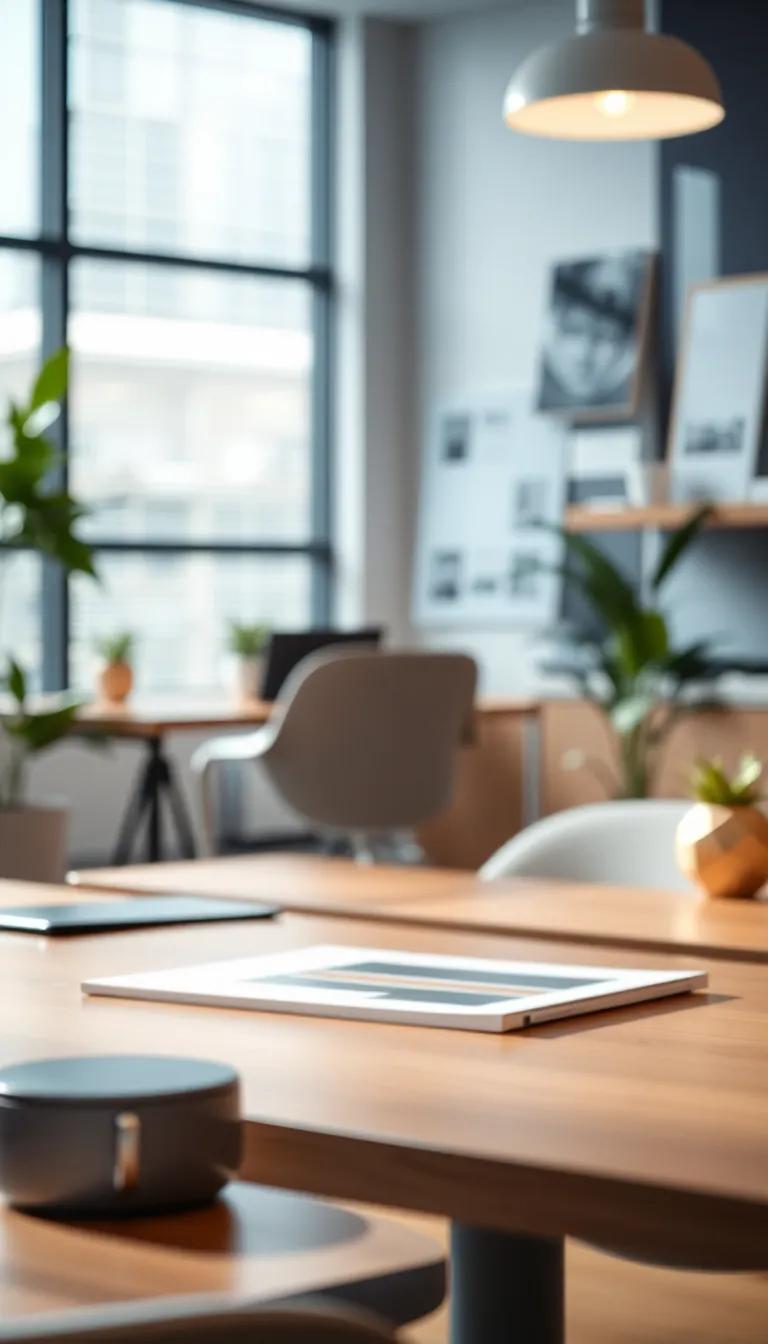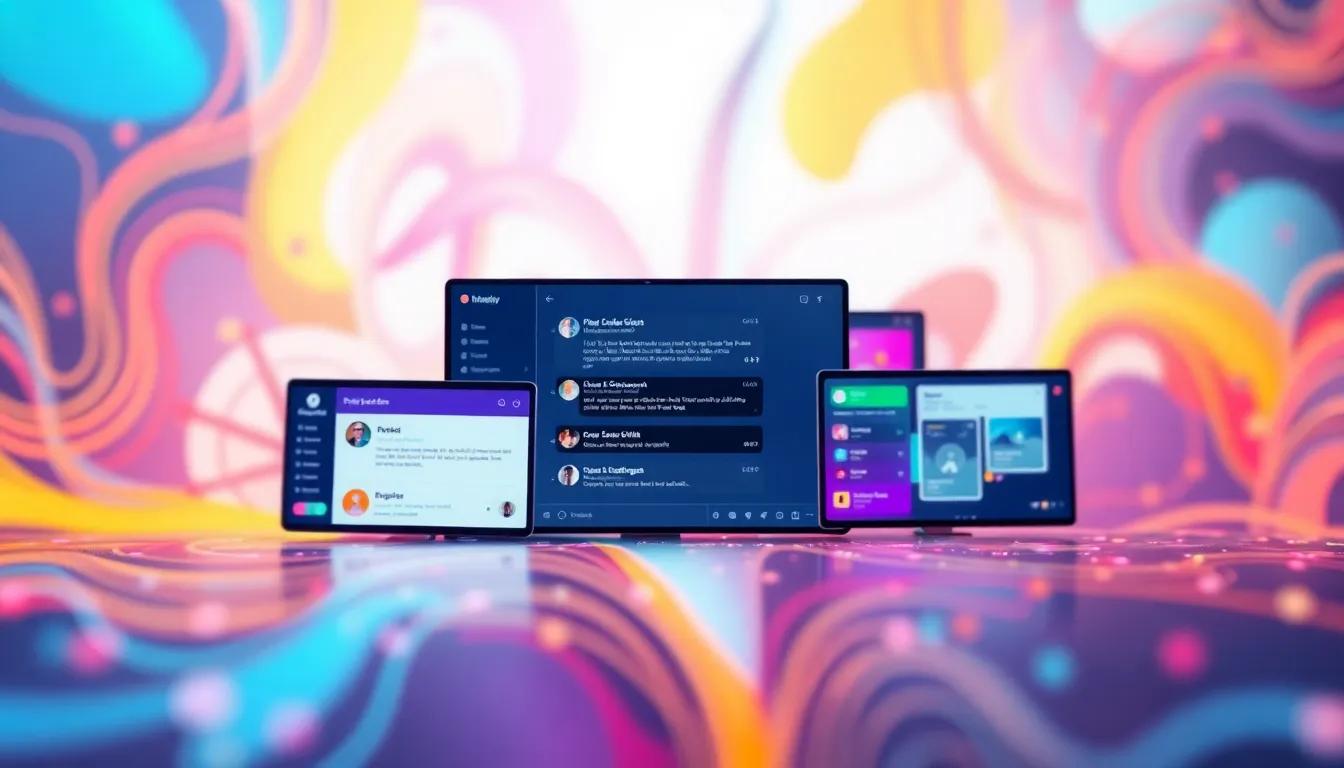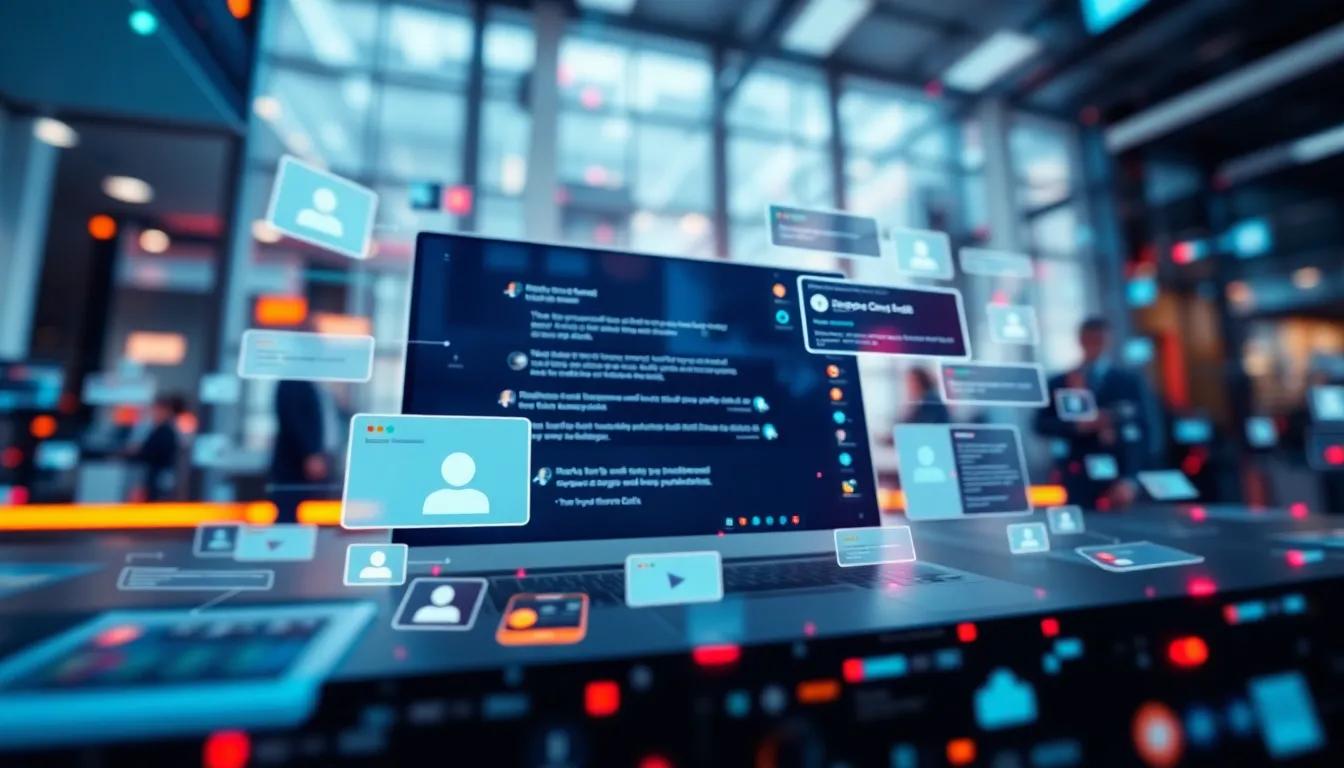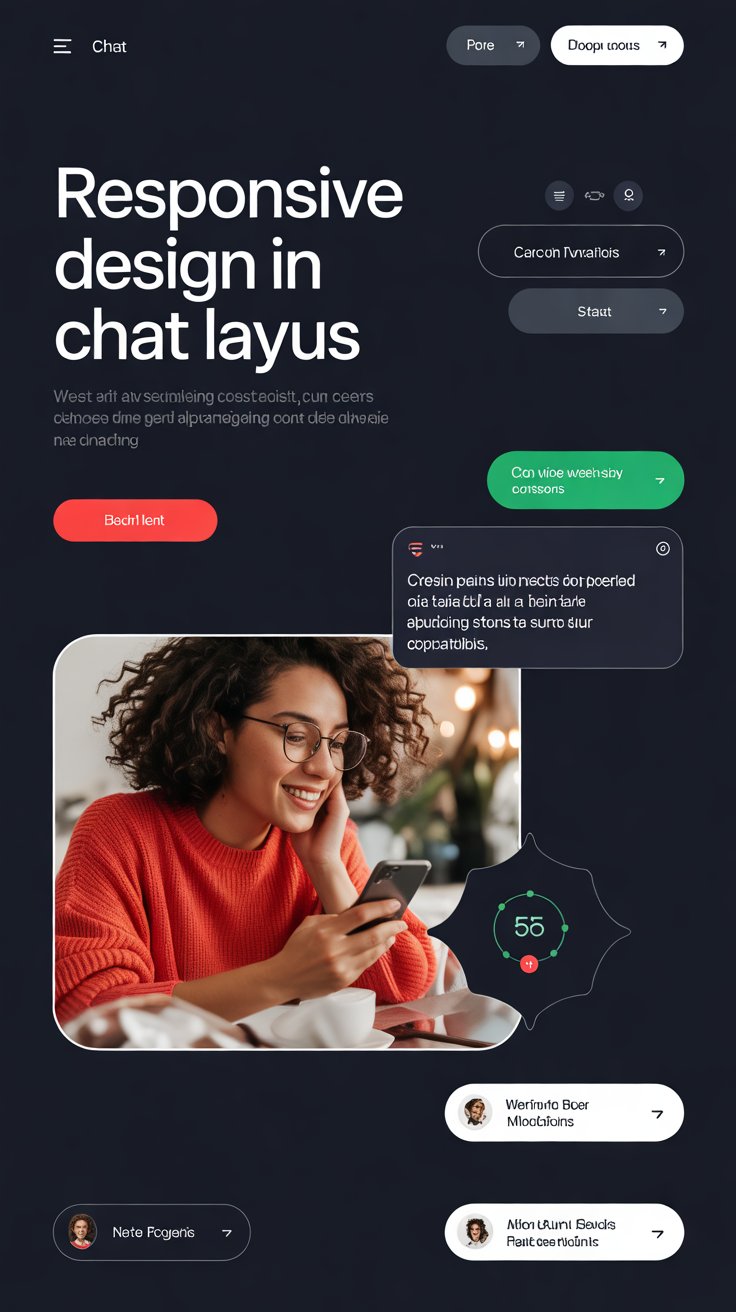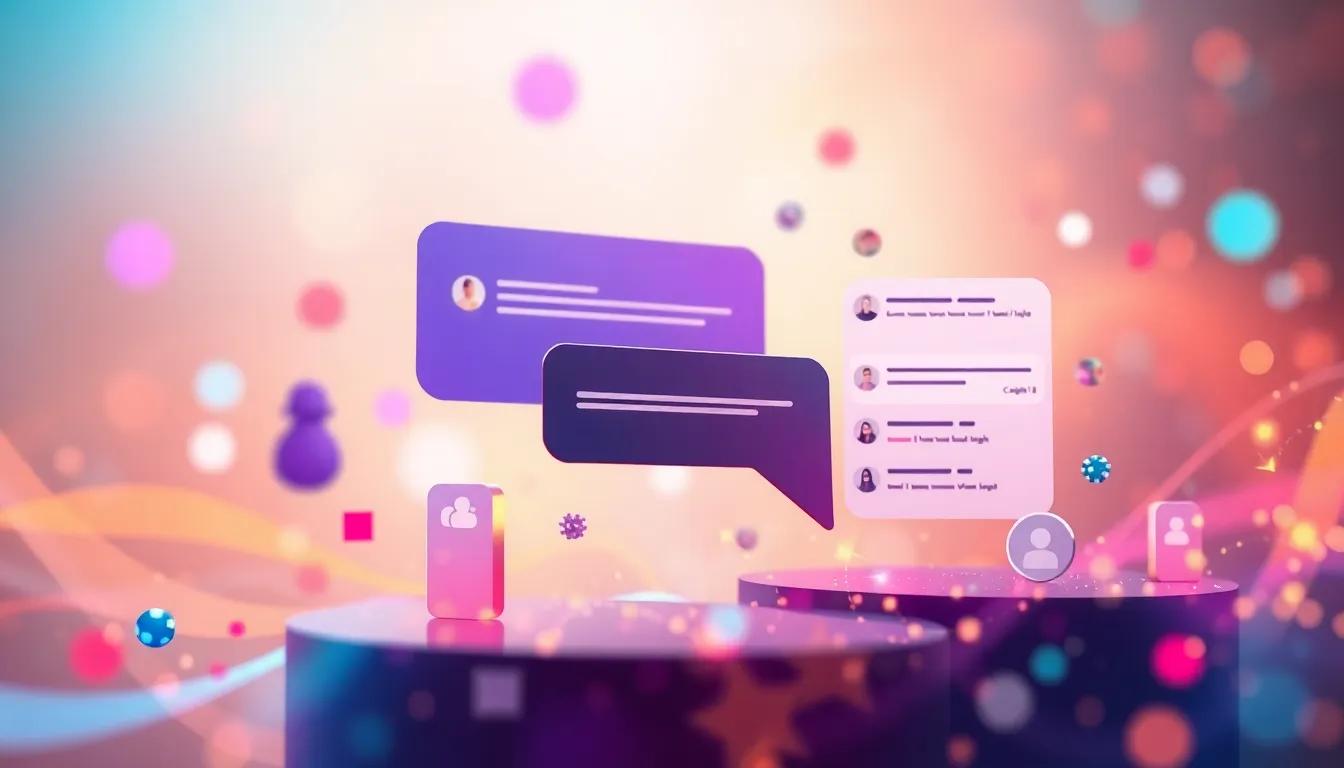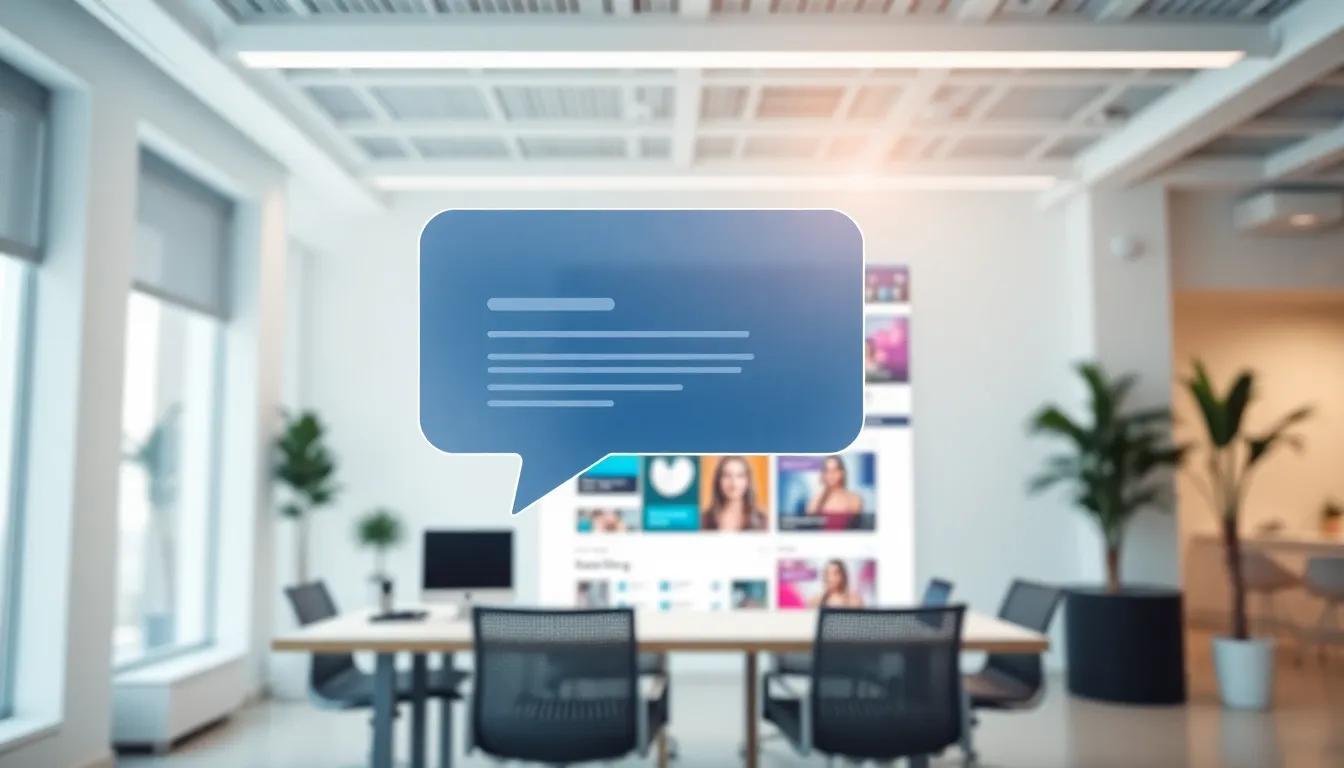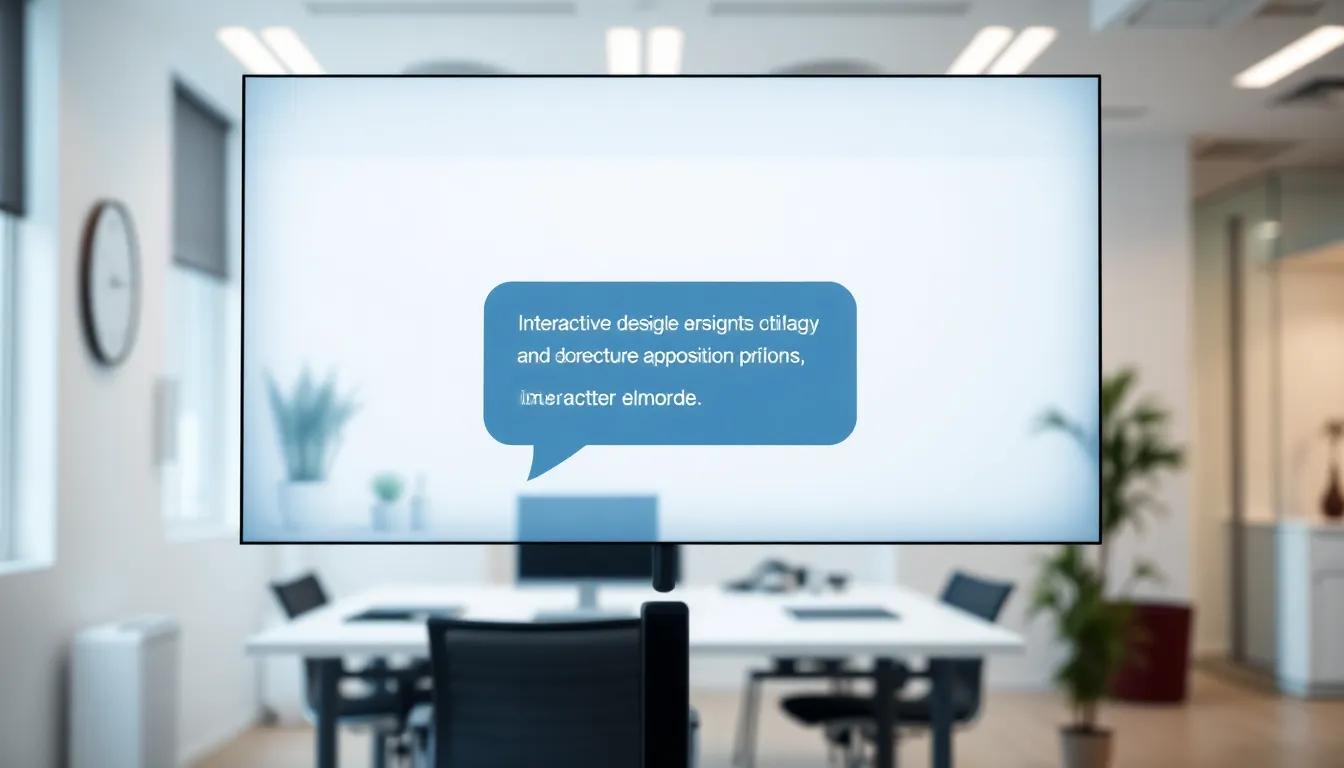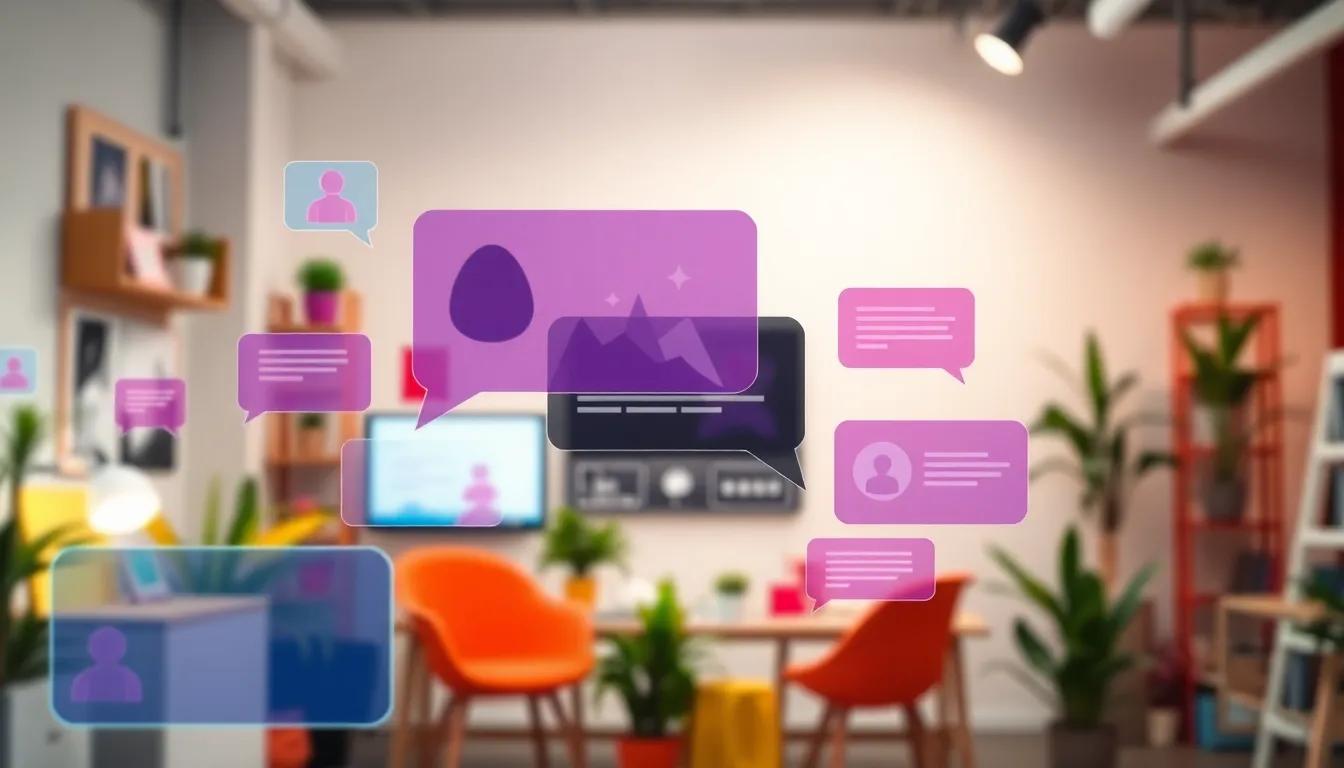Introduction
Effective communication on websites can significantly influence user engagement and satisfaction. Chat layout design emerges as a critical element, providing a structured environment for real-time interactions between users and service agents. This article explores the strategies and principles behind modern chat layout design, focusing on how to create seamless experiences for website visitors. By analyzing both visual and functional aspects, we delve deeper into achieving user-centric design.
The user interface (UI) in chat applications plays a vital role in ensuring smooth conversations. A well-designed chat layout not only facilitates effortless communication but also keeps users engaged longer on a site. This exploration will cover key components such as message display, input methods, and accessibility, providing insights into how these elements come together to create an effective chat service.
Understanding Chat Layout Basics Crafting Seamless Web Interactions
At its core, a chat layout refers to the structured framework that facilitates communication between users on a website through chat interfaces. This layout serves as the visual and functional backdrop for conversations, significantly influencing the overall user experience. The importance of a thoughtfully designed chat layout cannot be overstated; it can mean the difference between a positive user interaction and one that frustrates or confuses the visitor. An effective chat layout enhances usability, fostering an environment where users feel comfortable engaging with the website.
A primary component of chat layout design is the user interface (UI). The UI encompasses all visual elements that guide users in navigating the chat function. This includes chat windows, buttons, and text fields. A well-designed UI should prioritize clarity and simplicity, making it easy for users to understand how to initiate and maintain conversations. Flawless interaction design that anticipates user needs, such as offering quick response buttons or frequently asked questions, can significantly elevate the overall experience.
Another critical aspect is message display, which governs how conversation history and current messages appear within the chat interface. Clear differentiation between user messages and responses from customer support representatives enhances readability and comprehension. Utilizing timestamps and visual indicators for typing status can further enrich the chat experience, as they provide real-time feedback to users, making the interaction feel more dynamic and engaging.
To ensure a seamless chat experience, designers must also consider the adaptability of the chat layout across various devices. Given the prevalence of mobile browsing, responsive design is essential. A chat layout should seamlessly adjust to different screen sizes, preserving functionality and visual appeal. This responsiveness empowers users to engage via their preferred devices without sacrificing experience quality, ensuring that communication remains fluid regardless of context.
Understanding the basics of chat layout design is critical for developing engaging website interactions. A focus on user interface, message display, and responsive design will create an inviting atmosphere for users and encourage their active participation, ultimately leading to better engagement and satisfaction with the website.
Visual Design Principles for Chats Enhancing User Interaction through Aesthetic Aspects
The visual elements of chat layouts serve as a vital component of user experience, significantly impacting how effectively users interact with chat systems. Color palettes, font choices, and overall themes can enhance engagement, create a welcoming atmosphere, and even foster brand recognition. A well-thought-out design can transform a simple chat feature into an engaging communication tool, directly influencing satisfaction and retention rates.
Color Theory in Chat Design
Color is one of the most potent tools in visual design. In chat layouts, selecting the right colors can set the tone and mood of interactions. For instance, warm colors such as reds and oranges can convey energy and urgency, while cool colors like blues and greens are often associated with calmness and trust. Using a harmonious color scheme enables designers to highlight crucial components, such as message bubbles, buttons, or notifications, guiding the user’s attention where it is needed most.
Consistent use of brand colors reinforces brand identity. A seamless integration of colors associated with the brand not only makes the chat visually appealing but also strengthens users’ connection to the overall brand experience.
Typography: Font Selection and Readability
The choice of fonts can greatly affect the readability of chat texts and the overall aesthetics of the layout. Sans-serif fonts are commonly favored for digital interfaces due to their clean lines and ease of reading on screens. Font sizes must be appropriately adjusted, ensuring that messages are easy to read without the necessity for zooming, which can detract from the seamless interaction users seek.
Hierarchy in typography is also essential. Key messages, user names, and timestamps can have distinct font weights or styles, creating a visual hierarchy that helps users quickly navigate through conversations. This approach minimizes cognitive load, allowing users to focus on the content rather than decoding the layout.
Overall Themes and User Experience
Establishing an overall theme for a chat layout contributes to cohesiveness and user experience. Themes can vary widely—to convey professionalism in customer service chats to playful creativity in casual chat applications. The theme should resonate with the user base while remaining adaptable to user preferences. Elements such as icons, backgrounds, and button styles should align with the chosen theme to create a unified and enjoyable experience.
Paying careful attention to visual design principles in chat layout not only enhances immediate user interaction but also fosters longer-term engagement and brand loyalty, setting the groundwork for a fruitful communication channel.
Responsive Design in Chat Layouts Ensuring Compatibility Across Diverse Devices
The rise of mobile technology has redefined the expectations users have for chat applications. With an increasing number of users accessing websites via smartphones and tablets, the necessity for responsive design in chat layouts has become paramount. Responsive design ensures that chat interfaces not only function properly but also look aesthetically pleasing across a wide range of devices and screen sizes.
A responsive chat layout adjusts dynamically to a user’s device, providing an optimal viewing experience. For instance, when a visitor uses a mobile phone, the chat interface can condense into a simplified format that offers essential functionalities without overwhelming the user. This is particularly important for maintaining engagement, as a cumbersome chat window on a small screen can lead to frustration, driving users away instead of encouraging interaction.
Implementing responsive design involves several critical elements. First, flexible grid layouts are fundamental. This approach enables the chat interface components, such as text bubbles, input fields, and buttons, to resize appropriately based on the screen dimensions. Using percentage-based width settings prevents fixed sizes that could cause elements to overflow or become inaccessible on smaller devices.
Another key aspect is the use of fluid images and media. In a chat application, users often share images, videos, or links. Ensuring that these media elements can scale down without losing quality promotes a seamless user experience. Additionally, utilizing CSS media queries allows developers to create specific styles for various screen sizes, ensuring that the layout adapts efficiently without disrupting the aesthetic or functionality.
Touch targets also play a vital role in responsive chat layouts. On mobile devices, button sizes should be ample enough for users to tap easily without needing precision. A well-designed chat application takes into account the dimensions of fingers and thumbs to ensure that interactive elements are spaced adequately, thus preventing misclicks that could frustrate users.
Keeping in mind the loading speed is crucial for user retention. The responsiveness of a chat layout not only refers to its visual properties but also encompasses performance. Optimizing the design to reduce load times ensures that users remain engaged without distractions or delays.
User Engagement Techniques in Chats Enhancing Interaction Through Effective Design
Interactive Elements for User Engagement
Effectively engaging users in chat interfaces requires the incorporation of interactive elements that respond to and anticipate user needs. These elements can take various forms, including buttons, quick replies, and visual feedback mechanisms. Buttons, for instance, can present users with predefined responses, simplifying the interaction and leading to faster resolutions. By focusing on user intent, chat designers can create options that guide users through their inquiries without the need for exhaustive typing.
Quick reply options are particularly powerful in promoting engagement. This feature reduces friction by allowing users to respond with a single click, rather than weighing through multiple lines of text. Strategic placement of these buttons, often appearing directly alongside the input field or within the conversation flow, makes them easily accessible and evident to users. Not only does this method encourage quicker communication, but it also helps maintain the conversation’s momentum, making users feel heard and valued.
Visual and Dynamic Features
Incorporating dynamic visual features can transform a static chat interface into a lively environment that captures user interest. Consider integrating animations that respond to user input, such as the chat window slightly expanding or icons reacting when hovered over. Such design choices add an enjoyable layer to chats and create a sense of interactivity, keeping users engaged for longer periods. Furthermore, displaying typing indicators or read receipts provides instant feedback, assuring users that their messages are being attended to—all crucial for user retention and satisfaction.
Another valuable technique is the use of rich media, such as images, videos, or GIFs, in the chat flow. Users are often more likely to engage with visual content than plain text, providing an opportunity for brands to incorporate lifestyle imagery, infographics, or product demonstrations into their chat interactions. Such media not only enhances the overall aesthetic of the chat but also serves to better convey messages and information, ultimately leading to more effective communication.
Through the implementation of these interactive elements and dynamic features, chat designers can substantially enhance user engagement, creating a more enjoyable and effective experience that meets the needs of diverse users. Engaging chat interfaces paved the way for deeper interactions and fortified user relationships, making them integral to modern web experiences.
Accessibility in Chat Design Strategies for Inclusive Chat Layouts
Creating Inclusive Interfaces for All Users
In today’s digital landscape, accessibility in chat design has become a necessity, ensuring all users, including those with disabilities, can engage effectively with website chats. An inclusive chat layout should prioritize usability for individuals with diverse needs, spanning visual impairments, cognitive disabilities, and motor skill challenges. A key strategy is to incorporate features like screen reader compatibility, sufficient color contrast, and adjustable text sizes. These elements empower users to navigate chats effortlessly, enhancing their interaction and overall experience.
Attention to detail in color choices is crucial. Utilizing high-contrast colors can significantly improve readability for users with low vision or color blindness. It’s vital to avoid color-coding information without text labels, ensuring that all critical elements are discernible without having to rely solely on color perception. In addition, implementing scalable font sizes allows users to adjust text accordingly, catering to their personal preferences and needs. This adaptability not only improves accessibility but also fosters a more welcoming environment for all users.
Utilizing ARIA Landmarks and Semantic HTML
To further promote accessibility in chat layouts, leveraging Accessible Rich Internet Applications (ARIA) landmarks and semantic HTML is essential. These tools help screen readers comprehend the chat’s structure, making navigation more intuitive for users with disabilities. Implementing ARIA roles, such as `role=”dialog”` for chat windows, enhances the user experience by providing context, allowing assistive technologies to convey information effectively. Moreover, ensuring that all interactive elements are keyboard-navigable allows individuals who are unable to use a mouse to engage in conversations seamlessly.
Beyond technical aspects, fostering an inclusive atmosphere involves designing chatbots and live chat assistance that can accommodate various communication styles. This might include offering options for voice input or simplifying language for users with cognitive disabilities. Actively seeking user feedback from individuals with disabilities can also guide iterative improvements in chat design. Through continuous engagement with all users, designers can refine layouts to meet diverse needs and thus enhance overall satisfaction with the chat experience.
Analyzing User Feedback on Chat Design Strategies for Iterative Improvement
In the journey to enhance chat layouts and create seamless user experiences, the role of user feedback cannot be overstated. Gathering and analyzing feedback allows designers to gain valuable insights into how users interact with chat interfaces. This process ensures that chat layouts evolve in alignment with user needs and preferences, refining them iteratively to foster improved engagement and satisfaction.
Collecting User Feedback Effectively
There are various methods for collecting user feedback that can yield actionable insights. Surveys and questionnaires are traditional but effective tools. By embedding short feedback forms within the chat interface, designers can prompt users to provide their thoughts after interactions. These inquiries should focus on specific aspects of the chat experience, such as ease of use, visual appeal, and response time.
User testing sessions offer another insightful approach. Observing real users as they navigate the chat interface can highlight pain points and areas for improvement that might not surface through surveys alone. Developers and designers should strive to create a comfortable environment during these sessions, encouraging honest feedback that can drive improvements.
Leveraging analytics tools to track user behavior provides quantifiable data on chat usage patterns. Metrics such as response rates, message length, and drop-off points can indicate areas needing enhancement. Heatmaps showcasing user interactions within chat layouts can pinpoint hotspots of engagement, revealing whether users are drawn to or deterred by certain design elements.
Analyzing Feedback for Continuous Improvement
The next step involves analyzing the gathered feedback systematically. Qualitative data from user comments can be categorized to identify recurring themes and concerns. This thematic analysis provides a broader understanding of user sentiments, which can then inform design decisions.
Quantitative data derived from surveys and analytics tools allows designers to assess the impact of specific changes. For example, if adjustments to button placement lead to higher engagement rates, designers should consider similar modifications in other areas. Comparing variations of chat layouts through A/B testing can also offer insights into which designs resonate more with users.
Effective chat layout design hinges significantly on continuous user feedback. By employing a combination of survey methodologies, user testing, and analytical tools, designers can ensure their chat interfaces not only meet but surpass user expectations. This adaptive approach leads to enhanced user interaction, setting the stage for future innovations in chat layout design.
Future Trends in Chat Layout Design
Emerging Influences on Chat Layout Design
As technology continues to advance, the landscape of chat layout design is poised for significant transformation. In recent years, users have expressed a demand for more intuitive and personalized experiences, prompting designers to rethink how chat interfaces are structured. The incorporation of artificial intelligence and machine learning is one of the most influential trends driving these changes. Chatbots capable of learning from user interactions are enabling more seamless, context-aware conversations, making layout design inherently more dynamic and responsive.
One compelling trend is the adoption of conversational UX design, where the chat layout shifts away from traditional fixed elements to a more fluid structure that evolves based on user input and preferences. This reconfiguration can manifest as variable-sized chat windows that adapt to the content shared, providing a cleaner visual hierarchy and reducing unnecessary clutter. As a result, users feel immediately engaged, interacting more naturally with the interface.
Another innovation on the horizon is multi-modal chat interfaces, which blend text, voice, and visual elements. For instance, users may initiate a chat using voice commands, subsequently transitioning to text as the conversation progresses. This hybrid approach necessitates a layout that accommodates various input methods seamlessly, thereby enhancing accessibility and user satisfaction. The challenge for designers will be to create layouts that fluidly support these transitions without disrupting the conversation flow.
Integrating Progressive Technologies in Chat Layouts
The integration of augmented reality (AR) and virtual reality (VR) technologies is another area with great potential for chat layout design. Imagine immersive chat environments where users can interact with digital avatars or 3D elements while conversing. This not only adds a layer of interactivity but transforms the concept of a mere chat window into a sociable space, fostering deeper emotional connections among users.
As security and privacy concerns prevail in the digital conversation space, the implementation of transparent design practices will become increasingly important. Users will expect layouts that promote trust, showcasing clear indicators of privacy settings and data protection features. This shift emphasizes the vital role of user-centric design in ensuring that chat experiences are not only engaging but secure and reliable.
Conclusions
The principles of modern chat layout design are integral to enhancing user experiences on websites. By prioritizing clear communication, intuitive interfaces, and accessibility, website owners can foster deeper connections with their audience. The strategies discussed throughout the article serve as a foundation for creating chat layouts that not only look appealing but also function effectively, driving engagement and satisfaction.
The evolution of chat design demands continuous adaptation to user needs and technological advancements. As we embrace these innovative strategies, the focus should remain on delivering a seamless and user-friendly chat experience, ultimately contributing to the overall success of any website.

